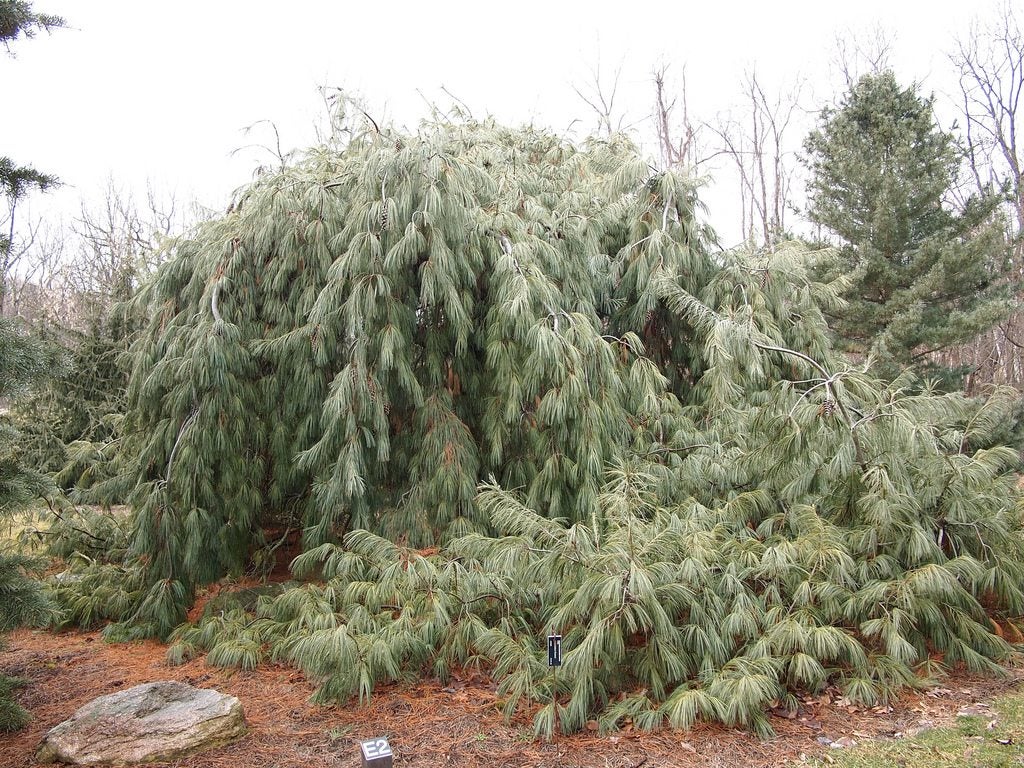Pendula Information – Tips On How To Grow A Weeping White Pine Tree


Everybody’s seen some type of weeping tree, garden ornamentals with branches that dip gracefully toward the earth. The most famous example might be the weeping willow. On the other hand, you may never have heard of weeping white pine. What is a weeping white pine? Read on for information on “Pendula” and tips on how to grow a weeping white pine.
What is a Weeping White Pine?
Weeping white pine (Pinus strubus “Pendula”) is a small cultivar of the white pine family. According to pendula information, it is a short shrub with many stems. The branches grow downward and spread across the soil surface like a groundcover. However, with proper early pruning, weeping white pine can develop into a small tree up to 12 feet (4 m.) tall. Its canopy outline is irregular. Weeping white pine’s canopy spread can be two to three times its height. Weeping white pine trees have smooth trunks covered with silvery gray bark. The bark is attractive when the trees are young, but as they age, the foliage covers the trunks all the way to the ground. The needles of a weeping white pine are evergreen and smell good. They are blue or blue-green, and between 2 and 4 inches (5-10 cm.) long.
Pendula White Pine Care
If you want to know how to grow a weeping white pine, first check your hardiness zone. These are hardy trees and thrive in USDA zones 3 through 7. If you live in a warm climate, you will not be able to invite a weeping white pine into your yard. According to pendula information, the weeping white pine is generally an easy-care, undemanding tree. It accepts most soils if they are acidic and well-draining. This includes loam and sand. Plant your tree in direct sun or a mix of sun and shade. Information on how to grow a weeping white palm indicates that the species has little tolerance for heat, salt, or drought. Water them regularly, keep them away from winter-salted roads, and do not try to plant them in zone 8 or above. The only arduous part of pendula white pine care is the pruning. If you do not shape this tree while it is young, it tops out at about knee height, growing as an evergreen groundcover. To make this plant into a small tree, reduce its many leaders to one by early structural pruning. If you want to be able to walk under the tree, you’ll need to trim the weeping branches as well.
Sign up for the Gardening Know How newsletter today and receive a free copy of our e-book "How to Grow Delicious Tomatoes".

Teo Spengler is a master gardener and a docent at the San Francisco Botanical Garden, where she hosts public tours. She has studied horticulture and written about nature, trees, plants, and gardening for more than two decades, following a career as an attorney and legal writer. Her extended family includes some 30 houseplants and hundreds of outdoor plants, including 250 trees, which are her main passion. Spengler currently splits her life between San Francisco and the French Basque Country, though she was raised in Alaska, giving her experience of gardening in a range of climates.